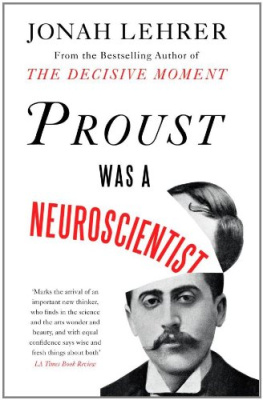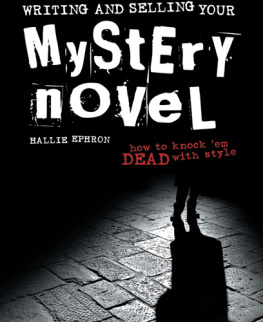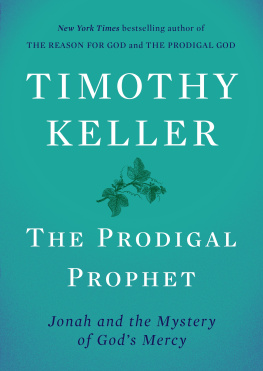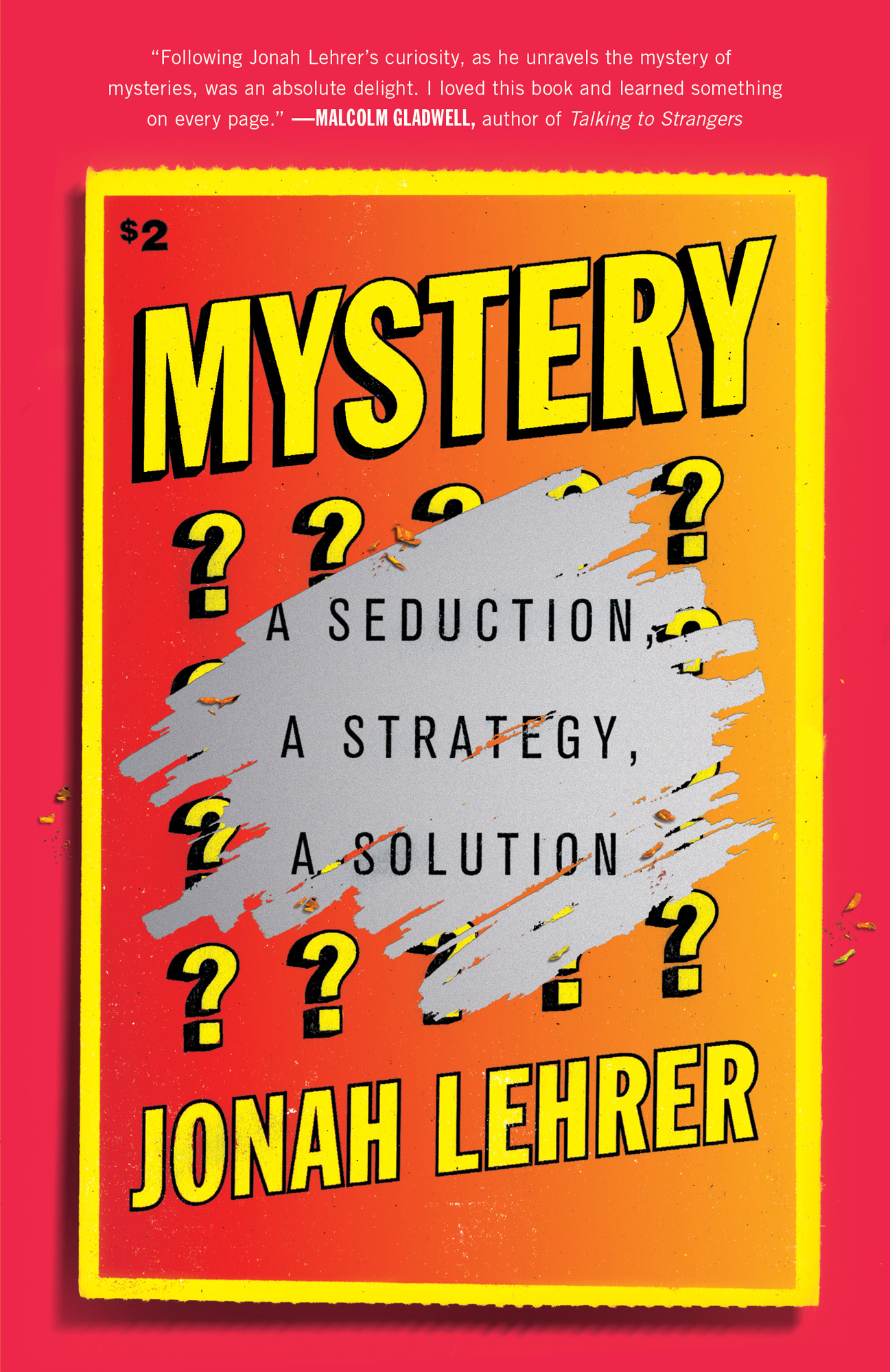Contents
Guide
Following Jonah Lehrers curiosity, as he unravels the mystery of mysteries, was an absolute delight. I loved this book and learned something on every page.
MALCOLM GLADWELL, author of Talking to Strangers
Mystery
A Seduction, a Strategy, a Solution
Jonah Lehrer
A VID R EADER P RESS
An Imprint of Simon & Schuster, Inc.
1230 Avenue of the Americas
New York, NY 10020
www.SimonandSchuster.com
Copyright 2021 by Jonah Lehrer
All rights reserved, including the right to reproduce this book or portions thereof in any form whatsoever. For information, address Avid Reader Press Subsidiary Rights Department, 1230 Avenue of the Americas, New York, NY 10020.
First Avid Reader Press hardcover edition August 2021
AVID READER PRESS and colophon are trademarks of Simon & Schuster, Inc.
For information about special discounts for bulk purchases, please contact Simon & Schuster Special Sales at 1-866-506-1949 or .
The Simon & Schuster Speakers Bureau can bring authors to your live event. For more information or to book an event, contact the Simon & Schuster Speakers Bureau at 1-866-248-3049 or visit our website at www.simonspeakers.com.
Interior design by Carly Loman
Jacket design by David Litman
Author photograph Leah Lehrer
Library of Congress Cataloging-in-Publication Data has been applied for.
ISBN 978-1-5011-9587-7
ISBN 978-1-5011-9589-1 (ebook)
For my family
O known Unknown! from whom my being sips Such darling essence
JOHN KEATS, Endymion
Art has something to do with an arrest of attention in the midst of distraction.
SAUL BELLOW
The one thing people never forget is the unsolved. Nothing lasts like a mystery.
JOHN FOWLES, The Enigma
INTRODUCTION THE MYSTERY OF MYSTERY
The most beautiful thing we can experience is the mysterious. It is the source of all true art and science. He to whom the emotion is a stranger, who can no longer pause to wonder and stand rapt in awe, is as good as dead: his eyes are closed.
ALBERT EINSTEIN
The Case of the Missing Writer
On the night of December 3, 1926, Agatha Christie put her young daughter to bed, grabbed her fur coat and suitcase, and left the house in a gray Morris Cowley. She told the maid she was going out for a drive.
The next morning, Agathas car was found near a chalk pit. It had been driven down a rutted dirt road, before careening off the track onto a grassy slope. The lights were left on; the brakes had never been applied.
Agatha was gone.
At the time, she was a little-known mystery writer. That spring, shed published The Murder of Roger Ackroyd, her third novel featuring the detective Hercule Poirot. The book was ingeniously constructedthe narrator turned out to be the killerbut only sold a few thousand copies. (She depended on three household servants.) To add insult to economic injury, her husband, Archie Christie, had fallen in love with a younger woman. He kept asking for a divorce.
The police initially suspected suicide. Agatha had visited her chemist a few days before; they had a morbid conversation about the best drafts for a painless death. Near her crashed car, the police found an open bottle of poison lead and opium. It seemed like a simple tragedy: a spurned wife had taken her own life.
But if Agatha had killed herself, where was the body? The police hired divers and drained a nearby pond. They scoured the Surrey Downs with bloodhounds. After the authorities put out a call for volunteers, thousands of amateur detectives showed up to look for the missing woman. But the crowds found nothing, not even footprints. It was as if Agatha had vanished into thin air.
The police officer in charge of the investigation, Deputy Chief Constable Kenward, began to suspect that Agatha had been murdered. Kenward was the kind of detective that Agatha Christie liked to invent in her novelsa man of deduction, hed been awarded the Kings Police Medal for closing several difficult murder cases. Kenward had a trim mustache, a bulging belly, and a fondness for fedoras.
When it came to Agathas disappearance, Kenward fixated on the fur coat shed left behind in the back seat. As Kenward noted, the temperature at midnight was thirty-six degrees. A damp wind was blowing in from the northeast. Why, then, hadnt Agatha taken her coat? Even suicidal people want to stay warm.
Kenward was also suspicious of the crash. The car had been driven down a hill, but there were no skid marks on the dirt. Why hadnt the driver tried to brake? The canvas roof was still attached, and the paint remained unscratched. It was as if, Kenward thought, someone had carefully driven the car to the edge of the cliff.
And then there was the Archie problem. Kenward knew Archie wanted a divorce. The servants said hed had a bitter fight with Agatha the day before. When Kenward asked Archie where hed been the night of her disappearance, he admitted that he was with his mistress at a friends house. Worst of all, hed burned the letter Agatha had left for him, telling the police that it was a private matter. Kenward found the husband vague and defensive.
Yet, Archie had a solid alibihis friend swore Archie had been with him all evening. (The car was in the garage, and he would have heard the dog bark.) And even if Archie had snuck out, Kenward couldnt figure out how hed have returned before morning. It was too long a walk and there was no sign of a second car. And why would the killer have left the poison behind?
Days passed. A reward of 100 was posted, but that only led to errant sightings. Agatha was dressed as a man on a London bus. She was wandering around Battersea. She was on a train to Portsmouth. The more Kenward learned about the case, the more mysterious it became. Every lead was a dead end.
As the press swarmed, Archie panicked. In an interview given to the Daily Mail, six days after Agatha went missing, he speculated that Agatha had staged her own disappearance. It was a literary exercise, not a crime. Some time ago she told her sister, I could disappear if I wished and set about it properly, he remembered.
The public didnt buy it, but Archie was right: Agatha hadnt been kidnapped or murdered. She had vanished herself. As the biographer Laura Thompson observes, Agathas disappearance was, in many respects, her finest mystery story. She had turned her own life into an irresistible whodunit, artfully placing clues that captivated the public. It was, the Times declared, one of the most sensational disappearances that ever enlivened the columns of the English newspapers.
Before she vanished, the public didnt know who she was. They only cared because she couldnt be found.
On December 14, eleven days after Agatha Christie was first reported missing, a banjo player at the Swan Hydropathic Hotel in Harrogate noticed that a woman on the dance floor closely resembled the missing writer. The musician told the police, who passed on the tip to Archie.
When Archie arrived at the Swan, he was told by the police to wait in the lobby. The hotel manager said that Agatha would soon descend for dinner; shed already made a reservation. After a few minutes, Archie spotted her on the staircase, dressed for another night of dancing in a pink georgette evening dress. Agatha calmly returned his gaze, then took a seat by the fireplace in the lounge. After a few minutes of awkward silence, the couple headed into the hotel restaurant for dinner.












